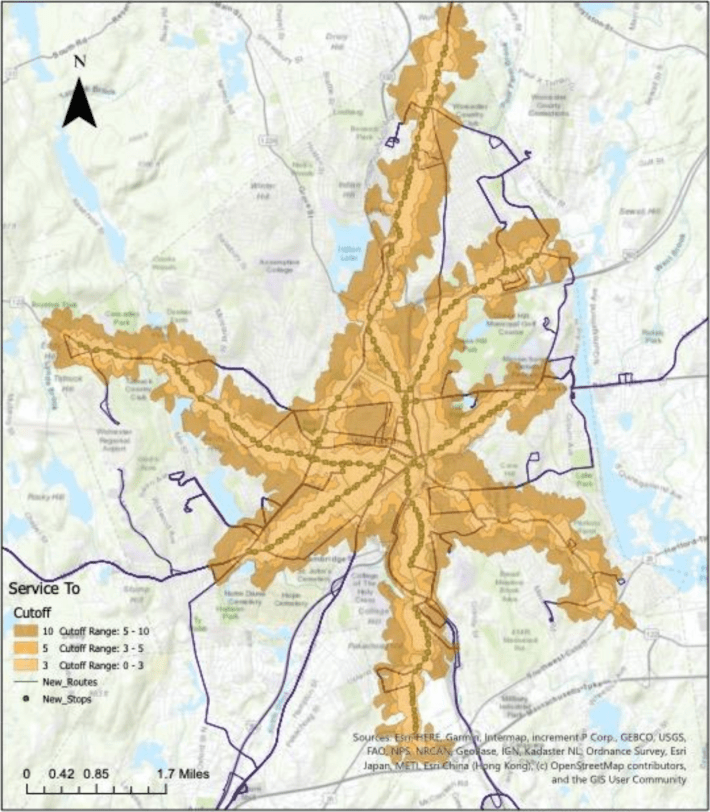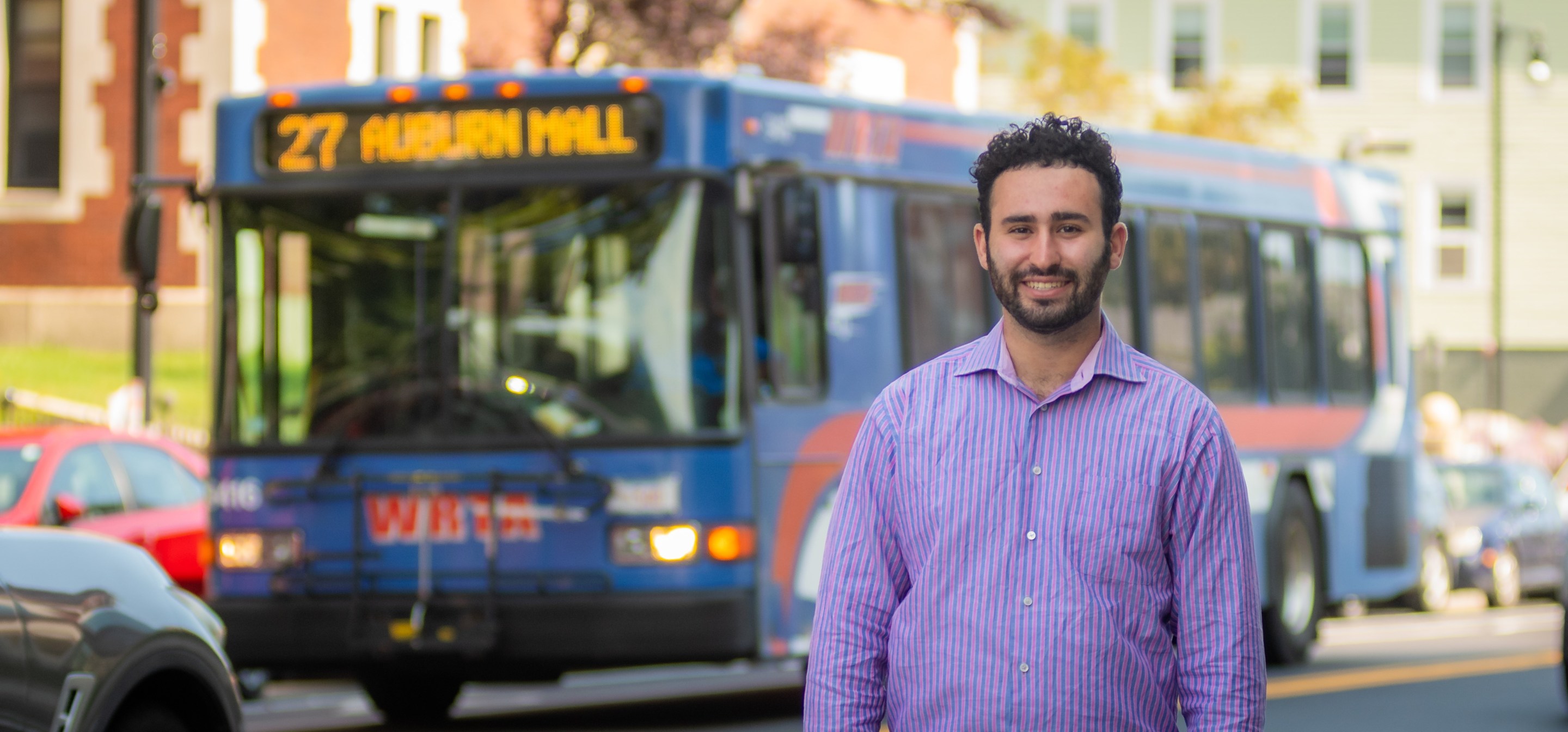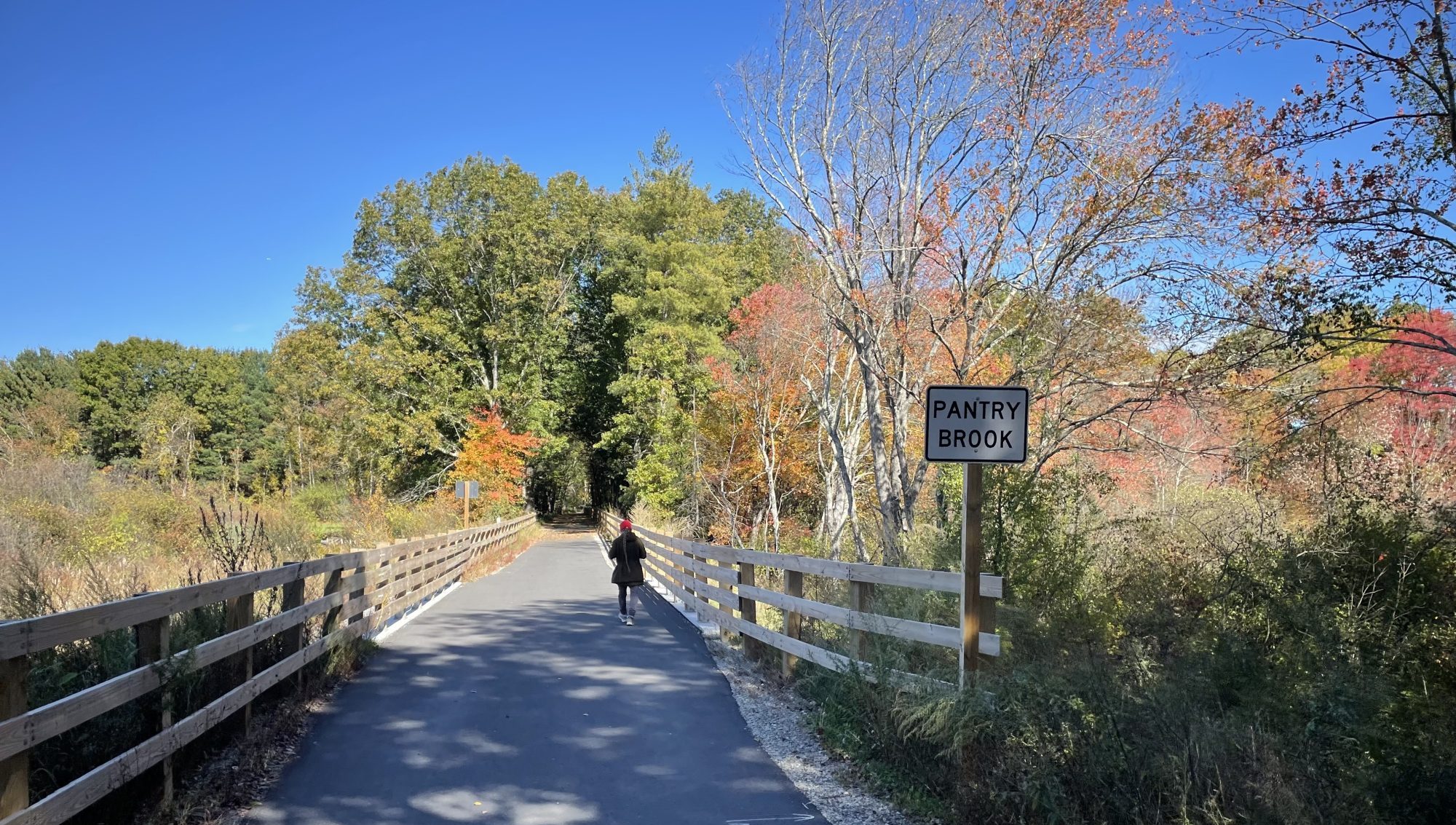In a new research paper, a Worcester college student has proposed a bus network redesign for the Worcester Regional Transit Authority (WRTA) that would dramatically increase service frequencies – with buses running every 10 minutes – and speed up bus trips on a network of dedicated bus lanes on the city's wide arterial streets.
Garren Kalter decided to study the WRTA last year when he was an undergraduate at Worcester's Clark University, at the recommendation of City Councilor Morris Bergman.
"Prior to the report, I rode WRTA fairly minimally," Kalter told StreetsblogMASS in a phone interview last week. "I did a bit of survey research at the beginning (of this project) before it was a formal thesis, and found that, even though Clark gets some of the best service in town, with five lines that go by the campus, a lot of Clark students are confused about the bus network, or the fares were prohibitive, or there were transfers that were required. So there are a variety of reasons people avoid it."
Kalter's recommendations for the WRTA have three main components: first, he thinks the agency should reduce the number of bus routes it has, and focus its service on a handful of key corridors throughout the city.
"There are lots of wonky diversions in the system, and redundancies. For instance, the 27, the 19, and the 33 all run on Main Street and often will leapfrog each other. If you just ran a single high-quality line on Main Street, it becomes more legible and more reliable for folks," Kalter said.

More controversially, Kalter also thinks that the WRTA should trim some of its more convoluted route diversions in outlying suburban neighborhoods.
For instance, his proposal would eliminate service along Mill Street on the city's suburban west side, where there are several large affordable housing complexes. The Route 7 bus that serves the area currently runs every 30 minutes, and takes 30 minutes to make the trip from the downtown Union Station transit hub to the end of the route at the Washington Heights apartment complex. The same trip takes 15 minutes by car, 25 minutes by bike, or 80 minutes on foot.
Kalter's report acknowledges that these neighborhoods "could clearly benefit from service," but argues that the WRTA should focus on increasing ridership "by bringing higher quality service to areas where new ridership is likely and businesses are concentrated," closer to the city center, then expand new service to outlying neighborhoods in a "phase 2" expansion.
Second, Kalter says that the City of Worcester should redesign its four-lane arterial streets to create a network of dedicated bus lanes and protected bike lanes, which would allow the WRTA to run more efficiently and frequently by significantly reducing the amount of time that buses are stuck in traffic.
Finally, with the savings gained from simpler routes and faster buses, Kalter says that the WRTA should boost service frequency and expand its hours of operations to attract more riders.
Currently, WRTA buses run every 30 to 60 minutes, but Kalter thinks that the agency could potentially run buses on a simplified network every 10 minutes, 18 hours a day.
"According to Census data, 14,000 households don’t have access to a car in Worcester," says Kalter. "That’s a huge issue for mobility and quality of life. And there are 36,000 college students in a normal year. So there’s a huge untapped demand for this service, and if we can make it as easy as possible to use, the returns could be astronomical."
Editor's note: After this story was published, Kalter decided to revise his proposal to incorporate a ninth route in his proposed WRTA network that would serve Mill Street and the Washington Heights apartment complex, similar to the current Route 7 bus.






